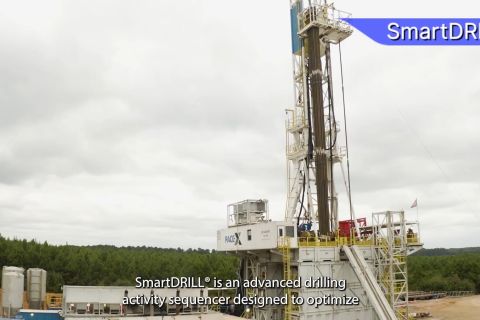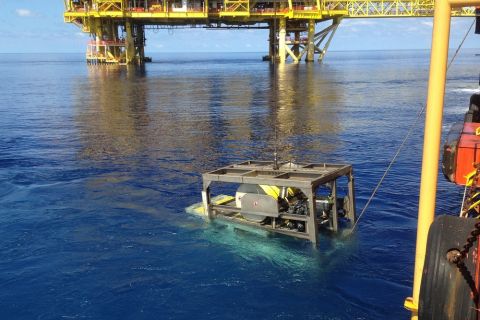Continued depletion from many gas and condensate fields has now resulted in declining production gas rates and arrival pressures. The plateau production rates for which the gas production system was originally designed have now passed, and the field is in decline. Continued production is possible, but the originally specified gas production equipment may no longer be appropriate for the declining gas rates. This can result in new operational issues such as continuous recycle and low power operation. It is important that these issues are addressed for production to be optimized.
Problem definition
The producing life of gas and condensate fields can be considered in three key stages – plateau, early post-plateau, and late post-plateau periods. Through these phases, declining reservoir pressures and well flow potentials will see the compression requirements moving from a high mass flow/low pressure ratio operating condition to a low mass flow/high pressure ratio one. Ensuring that the machinery operates in an optimal way across such a broad range of conditions is a challenge.
Of particular note are operations in the late post-plateau phase, where process duties are significantly different to those required early in the life of the compression system. During this time, issues such as compressor recycle, high discharge temperatures, and poor loading of gas turbine drivers are common themes that can lead to compromised plant operation.

Typical centrifugal compressor operating map and operating points over time. (Figures courtesy of MSE)
In addition, during the late post-plateau period, the ongoing operation of the asset may be economic only if arrival pressures can be lowered (to enhance rates or defer liquid loading of wells) and/or third-party tiebacks can be accommodated. Often these will require machinery modifications.
However, such changes are only feasible and economic if they can be made without wholesale changes to compression systems. In these instances, the challenge is to determine how required changes in operating conditions may be accommodated while working within the confines of the major machinery items such as driver model, gearbox centerline offset, compressor casing sizes, and nozzle diameters. Deriving the optimal machinery revamp solution requires a deep understanding of turbomachinery design and operation coupled with awareness of upstream and downstream plant capabilities and limiting factors.
Failure to make the required modifications to the compression plant throughout its life can result in:
- Post-plateau rates being much lower than would otherwise have been achieved;
- Inefficient plant operation with increased fuel burn and CO2 production; and
- Operation of machinery in regimes that result in compromised reliability, availability, and operability.
Legislative changes
Many assets were designed and installed in the latter decades of the 20th century, and since this time there have been several legislative changes that have resulted from environmental concerns. Emissions of natural gas to the environment by flaring or venting are now to be avoided except during upset conditions. Legislation on gas turbine exhaust pollutants such as nitrous oxide, carbon monoxide, and unburned hydrocarbons has resulted in gas turbine manufacturers developing dry low emissions (DLE) combustion systems to limit the formation of these pollutants over an operating power range.
As part of the shift to a low-carbon economy, emissions of CO2 can now result in a taxation burden that directly affects production operating costs. Fuel gas burned to achieve production is now not only a loss of potential sales gas but also a taxation liability.
Lower power operation, especially in the case of gas turbine drivers, can result in undesirable operations such as:
- Engine compressor handling bleed valves operating permanently open;
- DLE combustion system operating in the uncontrolled emissions region; and
- Poor driver efficiency resulting in increased fuel burn and CO2 tax liability.
Optimization considerations
Process optimization
Since the original asset development, subsequent exploration activity may have resulted in additional reserves being discovered in the area. These may not be large enough to warrant dedicated production facilities but can be tied back to an existing asset. New tie-back production can assist in restoring the compression equipment toward the original working point. Secondly, the transportation of third-party gas through an existing asset can, again, result in the restoration of compression requirements more suited to the existing facility.
Any changes in the gas composition and molecular weight will directly affect any centrifugal compressor performance. For any compressor configuration, the lower the gas molecular weight, the lower the attainable compression ratio. Changes in the gas mixture molecular weight also results in centrifugal compressor map distortion. This can then cause the working point to move toward surge in the case of a molecular weight increase.
Compression optimization
In order to achieve higher head capability and bring the compressor working point away from recycle operation, a re-wheel may be required. This is the replacement of the compressor rotor and stator bundle in the existing compressor casing. Several re-wheels also could be needed over the lifetime of the asset. If the machinery has a speed-increasing gearbox, it may be possible to exchange the gearbox rotors for a gear set with a different ratio and adjust the compressor speed to suit any new process requirements.
Each re-wheel (or speed change) can accommodate a certain range of flow and pressure ratio capability. Where the required pressure ratio exceeds the capability of a re-wheel configuration, it may be necessary to add an additional compressor casing to the machinery and use any spare power capability from the driver. This is normally only practical if the installation has been designed with this requirement from the outset and space is available for the new vessels and coolers.
Re-wheel and the addition of new compressor booster projects must carefully consider the overall process changes and the available driver power. Failure to have sufficient power margin from the driver when operating at the new process condition can result in an inability to drive the gas compressor out of unstable operation conditions.

Typical medium-sized gas turbine DLE characteristic.
Driver power optimization
Driver power margin issues can manifest themselves during low power operations when the engine is operating at typically less than 50% load. At such low power conditions, the engine compressor handling bleed valves may be permanently open, engine components lightly loaded, and fretting issues possible over time. This operating condition may not have been originally envisaged at the package design stage. Operation at low power set points can result in very poor energy conversion of the fuel gas – often less than 20% efficiency.
Also, if the engine has a DLE combustion system, the power range when the emissions are controlled is normally between 50% and 100% power. Outside this power band, emissions, especially emissions of carbon monoxide, are uncontrolled. The amount of fuel burned to achieve a certain power is relatively high, with potential consequential CO2 tax implications.
When third-party or additional gas tiebacks are considered, the opposing problem of insufficient driver power may be apparent as more power may be required. It is normal to provide a 10% power margin for new equipment to allow for field degradation of the drivers and compressors. To increase the power output of an existing gas turbine driver, certain product improvements may have been introduced by the engine manufacturer since the original installation. Such improvements – revised aerodynamic blading and coatings, for example – can normally be retrofitted during engine overhaul at the overhaul facility. Provided that other components in the machinery train (gearboxes and couplings) have sufficient power margin, these product improvements can offer a useful power enhancement technique or overhaul life-enhancing operation. The required engine power margin may be restored to the desired level.
Recommendations
To optimize mature assets, a certain degree of forward thinking and process simulation work is necessary. Only by monitoring the availability, reliability, and aerothermal performance of the compression equipment on a regular basis can trends be developed and issues be predicted. An installation will have its own unique set of parameters that will determine the required optimization configurations. There is no panacea, and each asset will require careful and robust examination of the many factors described.
Recommended Reading
Tech Trends: AI Increasing Data Center Demand for Energy
2024-04-16 - In this month’s Tech Trends, new technologies equipped with artificial intelligence take the forefront, as they assist with safety and seismic fault detection. Also, independent contractor Stena Drilling begins upgrades for their Evolution drillship.
Tech Trends: Safety, Speed, Savings: Automation is Transforming Drilling
2024-03-26 - Drilling is getting smarter through automation, delivering efficiency, consistency and reliability.
CERAWeek: Large Language Models Fuel Industry-wide Productivity
2024-03-21 - AI experts promote the generative advantage of using AI to handle busywork while people focus on innovations.
AI Poised to Break Out of its Oilfield Niche
2024-04-11 - At the AI in Oil & Gas Conference in Houston, experts talked up the benefits artificial intelligence can provide to the downstream, midstream and upstream sectors, while assuring the audience humans will still run the show.
Forum Energy Signs MOU to Develop Electric ROV Thrusters
2024-03-13 - The electric thrusters for ROV systems will undergo extensive tests by Forum Energy Technologies and SAFEEN Survey & Subsea Services.





